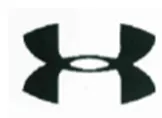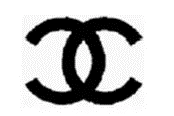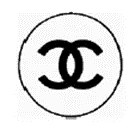Huawei vs Under Armour: A second win for Tech Giant
by Summer Xia
Recently, in June 2021, Huawei has scored a win in a new trademark battle on its “H” logo trademark. The Beijing High Court confirmed that the “H” logo from Huawei is not confusingly similar to the “H” logo of Under Armour.
| Huawei | Under Armour Prior rights |
 |
 |
You might recall that we spoke about a somehow similar case a few months ago.
Chanel vs Huawei case in the EU General Court has caused contention in April with the EU General Court concluding that although Huawei’s trademark and Chanel’s trademarks share some similarities, they are not similar trademarks especially considering that the Chanel trademarks have a horizontal orientation, while the Huawei trademark is vertical. In the above case (Huawei vs Under Armour) two vertical trademarks can also be considered dissimilar.
| Huawei | Chanel Prior rights | |
 |
 |
 |
Background
Dated back in September 2017, Huawei filed a trademark application before the CNIPA in Class 9, but was partially rejected over goods for notebook computers etc., because of Under Armour’s prior trademark, and only goods “smartphones and network communication equipment” got approved.
Being dissatisfied with the partial rejection notification, Huawei appealed the case to the CNIPA and then to Beijing IP Court.
The CNIPA and the Beijing IP Court held that Huawei’s trademark and Under Armour’s trademark are similar in the design style, the overall appearance and other aspects, and thus Huawei's claims should not be supported.
Despite unsuccessful appeal decisions from the CNIPA and the Beijing IP, Huawei appealed the case to Beijing High Court (the Court).

Beijing High Court’s opinion
The Beijing High Court concluded that the applicant of the disputed trademark, Huawei, is mainly engaged in business such as network communication, computers, mobile wearable devices and artificial intelligence; the registrant of the cited trademark, Under Armour Co., Ltd., is mainly engaged in business such as the operation of sports equipment.
According to the appellant's statement, the design of the disputed trademark shows a circle, around which the letter "H" is spliced by two “U", representing Huawei's initials. While, the cited trademark is a combination of the letters U and A of the English name "Under Armour", which have been identified by Chinese consumers with "安德玛" (Under Armour in Chinese).
Additionally, the disputed trademark's line thickness is exactly the same, but the cited trademark’s line thickness is obviously different. From the aspects of composition elements and appearance, the concept of composition of disputed trademark and cited trademark are different.
Further, the design style, the overall appearance and the related public awareness are different. If the two are used in downloadable computer applications etc, they can be distinguished.
In addition, since the disputed trademark has not been preliminarily examined and approved, if there is a possibility of market confusion between the disputed trademark and the prior trademark owner, the prior trademark owner may separately claim their rights through opposition or invalidation procedures.
Therefore, the court concluded that the disputed trademark and the cited trademark do not constitute similar trademarks.

What’s next
In Huawei vs Under Armour, besides analysing the similarity degree of the two trademarks, the court decided that the two trademarks are not similar also based on Huawei’s ex parte statement about the design style and the possibility of customers’ confusion about Under Armour’s trademark.
In a review of refusal litigation, as the owner of the cited trademark, Under Armour does not even have the chance to join the litigation and make any statement.
Some lawyers question the legitimacy of the decision because the Court has considered the reputation of both party’s trademarks in a procedure for administrative authorization of trademark rights.
Indeed, the Court’s decision seems contrary to a Supreme People’s Courts’ typical case in which the court stated that
“Since the trademark review of refusal procedure is ex parte, the cited trademark right holder does not have the opportunity to submit evidence regarding the reputation of the cited trademark. In order to maintain the legitimacy of the proceedings, evidence relating to the reputation of a trademark generally should not be considered in trademark review of refusal proceedings.”[1]
Additionally, according to Beijing High Court’s guideline, “In an administrative case of review of the rejected trademark application, the similar degree between the trademark in dispute and the cited trademark is mainly based on the trademarks themselves. The market reputation of the trademark in dispute may not be considered.”[2]
Nevertheless, the guideline used the word “may” rather than “should” which means that under certain circumstances the court can also consider the market reputation of trademarks.
The matter will now go back before the CNIPA, and the CNIPA will make a new decision based on the Court’s decision. Then the trademark will probably be published for opposition.
In the meanwhile, the appeal against non-use cancellation action against the cited trademark No. 8541511 is pending at the Court, and the decision has not come out yet.
Will Under Armour or any other party take opposition actions against Huawei’s trademark? Let’s see.
[1] (2016) Supreme Court Xing Shen No. 362
[2] Beijing High People’s Court Guidelines for the Trial of Trademark Right Granting and Verification Cases


